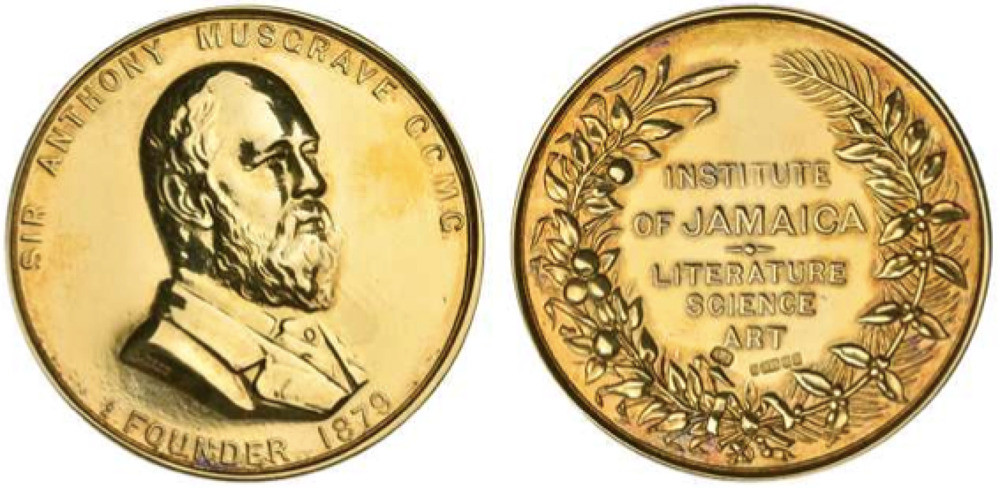Article



10 February 2014
A unique collection of coins, tokens and medals vividly illustrating more than three centuries of Caribbean history comes to auction at Dix Noonan Webb in London on 3 April 2014. They range from a celebration of the salvage of a fabulous hoard of Spanish silver in the 17th century to a gold medal awarded to a leading Jamaican journalist in the 1960s.
The collection was built up by the late Raymond Brandon from Jamaica whose quest for pieces took him from searching the dry river bed of Spanish Town, the original capital of Jamaica, to bidding in international salerooms. In the process he became a leading expert on the history of the Caribbean and in particular of Jamaica.
“Raymond Brandon was a one-off,” says Peter Preston-Morley, a specialist in coins, tokens and commemorative medals at DNW. “Encouraged by his parents, he began by collecting Commonwealth stamps and coins but eventually turned his attention to all things Caribbean and, in particular, to pieces from his native Jamaica. His collection of coins, tokens, paper money, books, maps, prints, old photographs and postcards, items relating to plantation life, furniture and silver was quite amazing.”
Brandon, who died in 2002, was a renowned expert who wrote articles for the bulletin of the Jamaica Historical Society, of which he was President, and other publications. He was a member of ERIK, a group of collectors from various Caribbean islands who specialised in the region’s cut and countermarked coins and met annually to share their finds and knowledge. An expert shot, he became a member of the Jamaican National Skeet Shooting Team (skeet shooting is a form of clay pigeon shooting).
One of the many rare pieces in the Brandon Collection is a silver medal struck in 1687 to commemorate the recovery of a fortune in silver from the Spanish ship Nuestra Senora de la Concepcion, which sank in the Silver Banks Passage (now the Turks & Caicos Islands). Silver worth £300,000 at the time was recovered by an expedition led by William Phipps, who was knighted by James II of England. The medal, depicting James II and his queen Mary of Modena, is expected to fetch £1,200 to £1,500.
Brandon assembled a substantial collection of anti-slavery medals, including an extremely rare copper medal commemorating the Anti-Slavery Convention held in London in 1840 (estimate £250 to £350), a medal of the St Ann’s Bay Anti-Slavery Society dating from 1839 (estimate £300 to £400) and a superb copper medal produced in 1838 to celebrate the Abolition of Negro Apprenticeships in Jamaica. This rare piece depicts the head of William Knibb, a missionary schoolmaster in Jamaica, and is expected to sell for £400 to £600.
More modern items in the collection include the Institute of Jamaica’s gold Musgrave Medal awarded in 1965 to Theodore Sealy, a distinguished journalist and former editor of the Jamaica Gleaner, for “cultural leadership” (estimate £600 to £700).
Brandon’s collection of Jamaican tokens and tallies is the largest ever to have been sold at auction, with over 3,000 pieces grouped in 48 lots. They include many great rarities such as the Kingston Church of Scotland lead communion token (estimate £100 to £150), the Kingston and Liguanea Water Works Company brass Three- Halfpence token (estimate £400 to £600) and the Kingston Plaza Co Ltd aluminium Shilling, thought to be the only example available on the market (estimate £200 to £400). A rare white metal advertising check for William Breakspear, importers and general merchants in Montego Bay, Jamaica, is predicted to sell for £500 to £1,000.
Additional Links
The following links are related to this article:
Ancient Coins and World Coins, Tokens and Commemorative Medals (3 April 2014)
Share This Page